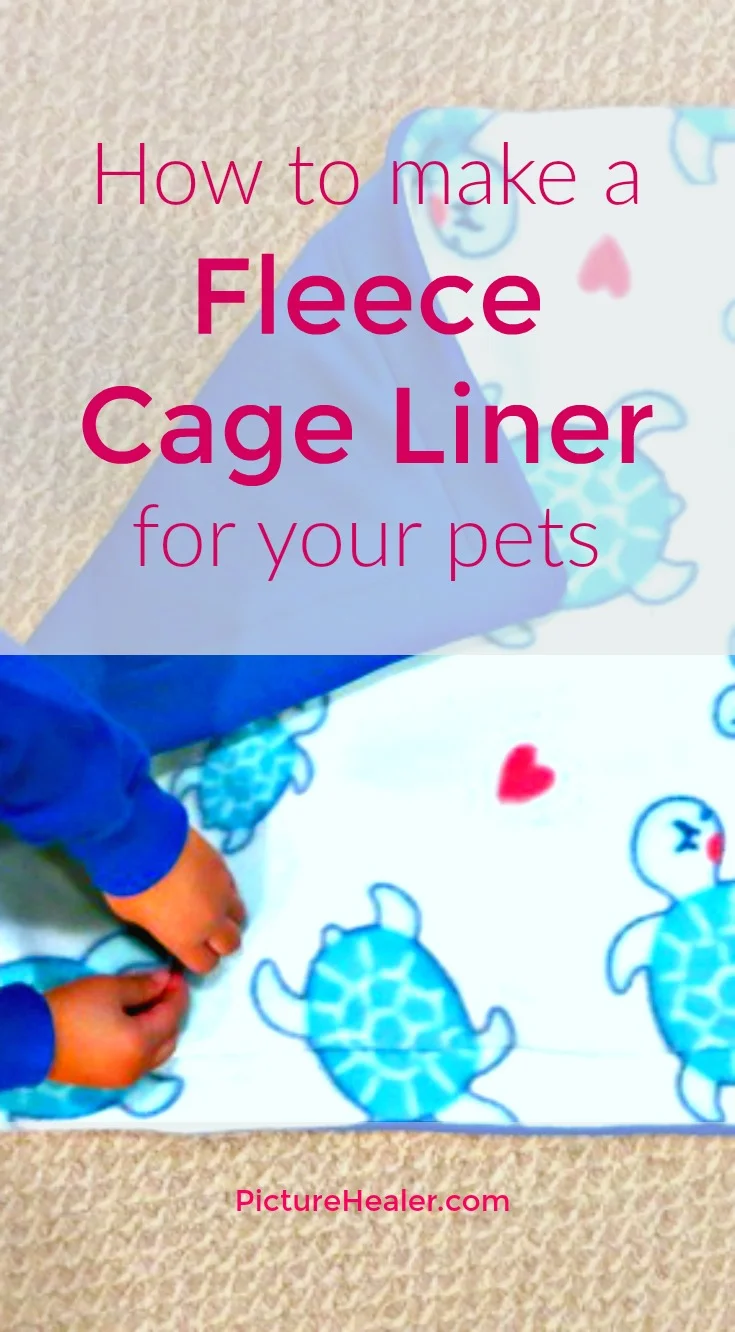How to sew a fleece cage liner for small pets
/If you have small pets such as guinea pigs, hamsters or rabbits, you know how hard it is to keep their living space clean, and how much it cost to constantly buying bedding/ wood chips from the pet store. It is worth the effort to make your own reusable cage liners, pee pads, or weewee pads.
Why homemade fleece liner for your little pets?
1. Comfort. It is very comfortable for pets because the fleece wicks away the liquid so the surface is always dry. It is also warm and soft for pets to walk on.
2. Environmental friendly. It is reusable and machine washable. You only need 2-3 big liners to rotate for laundry. Extra smaller liners / area pads can be put in high traffic areas near food or litter box.
3. Low cost. It is easy to make if you know how to use a sewing machine. You can recycle old fleeces and old towels around the house. If you buy new bedding materials from pet stores, it will get expensive very quickly.
4. Customization. You can pick fleece fabric of any pattern and color, adding absorbent layers, change dimensions to fit your pet's space perfectly. Isn't it part of the fun for keeping a pet? Design it exactly the way you want.
What material and equipment do I need?
- Sewing machine. I have an old Singer 201 metal sewing machine. I also use a Serger, but it is not necessary. You can also hand sew, but it takes a lot longer. Any sewing machine will work. Vintage metal one (like those black Singer) usually works better than modern plastic machine, and an industrial sewing machine will be even better. Because the fabric layers becomes thick, be careful not to force fabric through machine or the needle might break.
- Fleece fabric. Do not use the long pile Minky fabric, just standard fleece for easy cleaning. Prepare fleece by washing several times with mild detergent so water does not just sit on top. That is why old fleece works the best.
- The absorbent fabric. Old cotton towels or beach towels works well. If you want thin fabric with extra absorbency, try "Zorb". It is a special fabric that claim to absorb several times of cotton fabric. Available on Amazon or Ebay. I have some leftover Zorb from my cloth diaper making days. That's what I use in this tutorial.
- Waterproof fabric. You do not need waterproof fabric for cage liner. Many people just use fleece for top and bottom layer, or skip this layer completely. Waterproof layer is convenient to keep the cage or floor clean. You can buy PUL fabric (thin plastic usually for cloth diaper making), waterproof shower curtain or mattress protector. Make sure it is machine washable and dryer friendly if you use a dryer.
- General sewing supply. Ruler or tape measure, scissor, pin (or clip), thread and needle for sewing machine.
Tutorial:
The above video/ slides shows the basic process. Place fabrics with right sides facing each other, sew 3 sides or 4 sides leaving an opening for turning over. Then fold the raw edge and sew the opening close.
Sew a straight line about 2 inches in from the edge to secure the middle layer. So it retains the shape and does not shift around in the washer.
For the size, measure the floor area you want to cover, plus 3/4 to 1 inch for seam allowance. Because 3 layers create a thick fabric, we use a bigger seam allowance than garment sewing. It is also nice to be a little bigger than too small.
All the skill you need is to sew straight lines. Use a thicker needle and Polyester thread for strength. Longer stitches is better because of the thickness of fabric.
If it gets too bulky to sew around the edge or corner, trim some of the middle absorbent layer, or trim down extra fabric. Don't force the fabric to run through the sewing machine or it might damage the machine.
How to wash your fleece liner?
We use the fleece liner for our guinea pigs. First, use a brush or vacuum to clean whatever sits on top of fleece. Second, take it outdoor to fluff it and get rid of as much dust as possible. Third, soak it in water if it is extra dirty, otherwise just put it in a washing machine with mild detergent.
My favorite laundry detergent is Nellie's all natural laundry soda, Molly's Suds, Charlie's soap and Dr. Bronner's Sal Suds. Do not use bleach or softener. Hot water is ok. Treat it like cloth diaper, we don't want extra chemicals to block the water wicking function of the fleece or absorbing function of the cotton.
Next time, we will post a tutorial about how to make little pet beds with fleece or cotton. We tried several versions for our guinea pigs. Very cute and warm. Stay tuned.






How to hand sew a simple fabric book cover video tutorial.